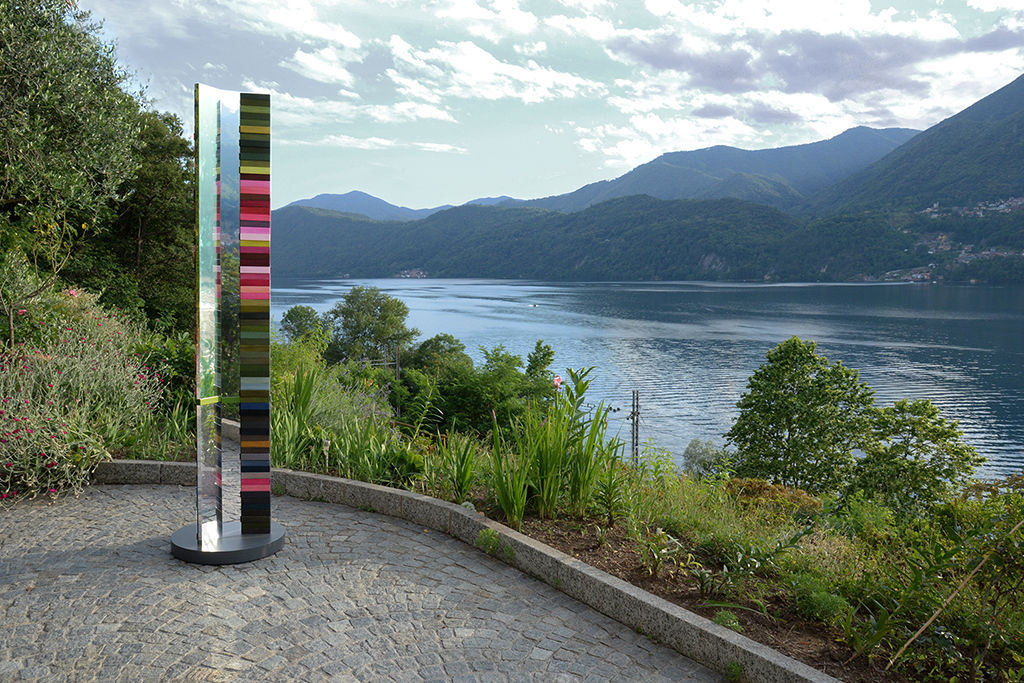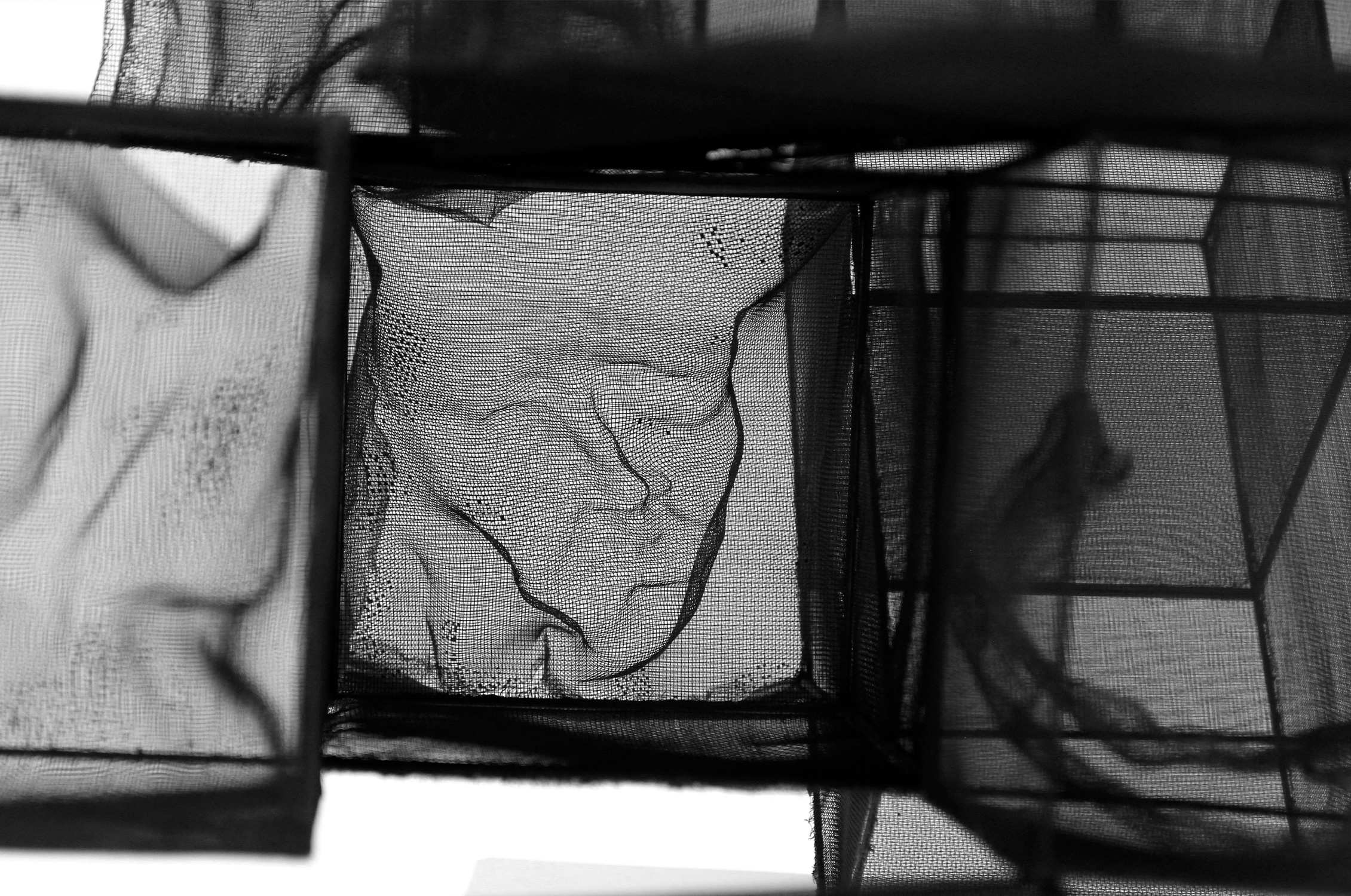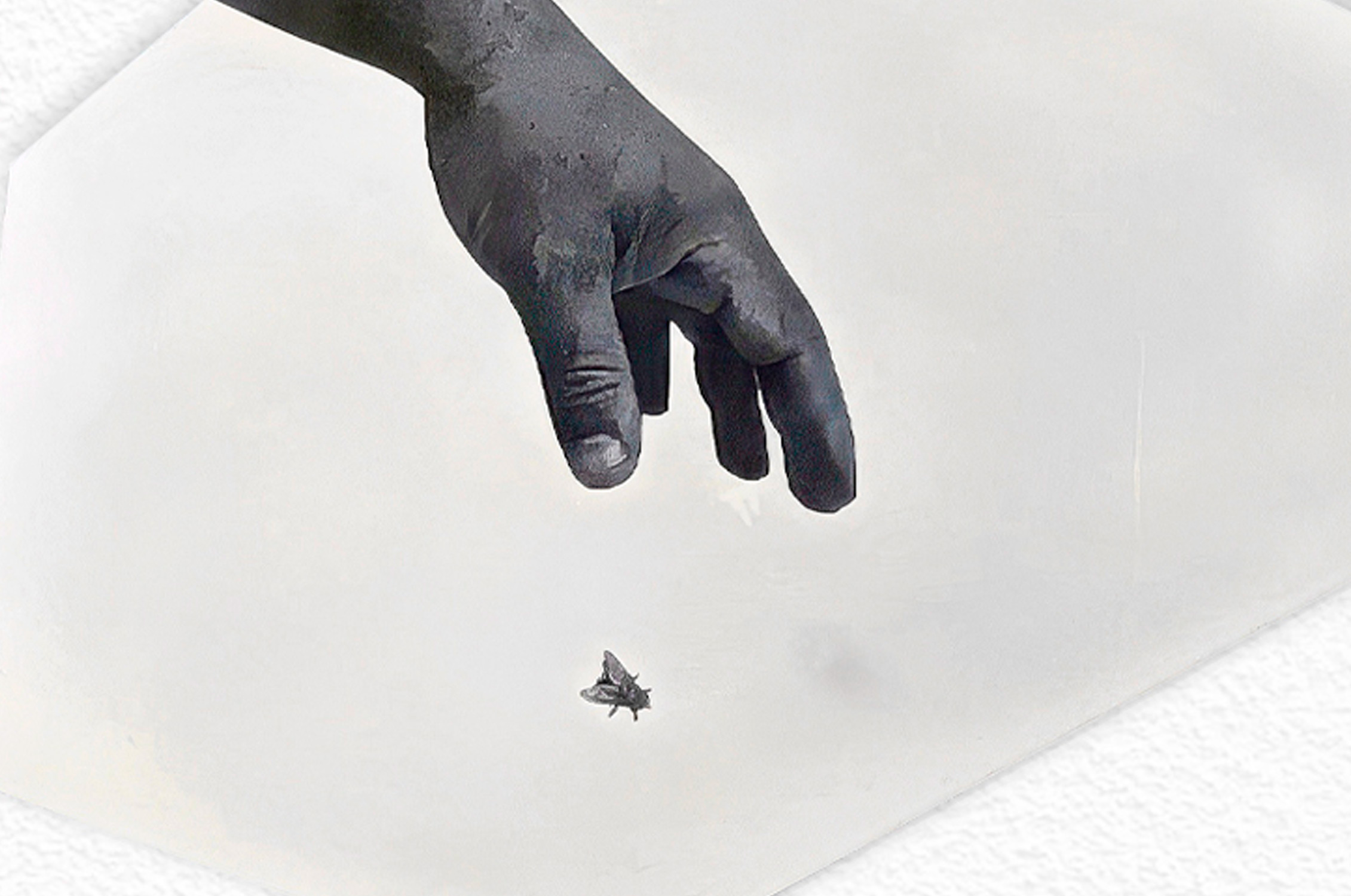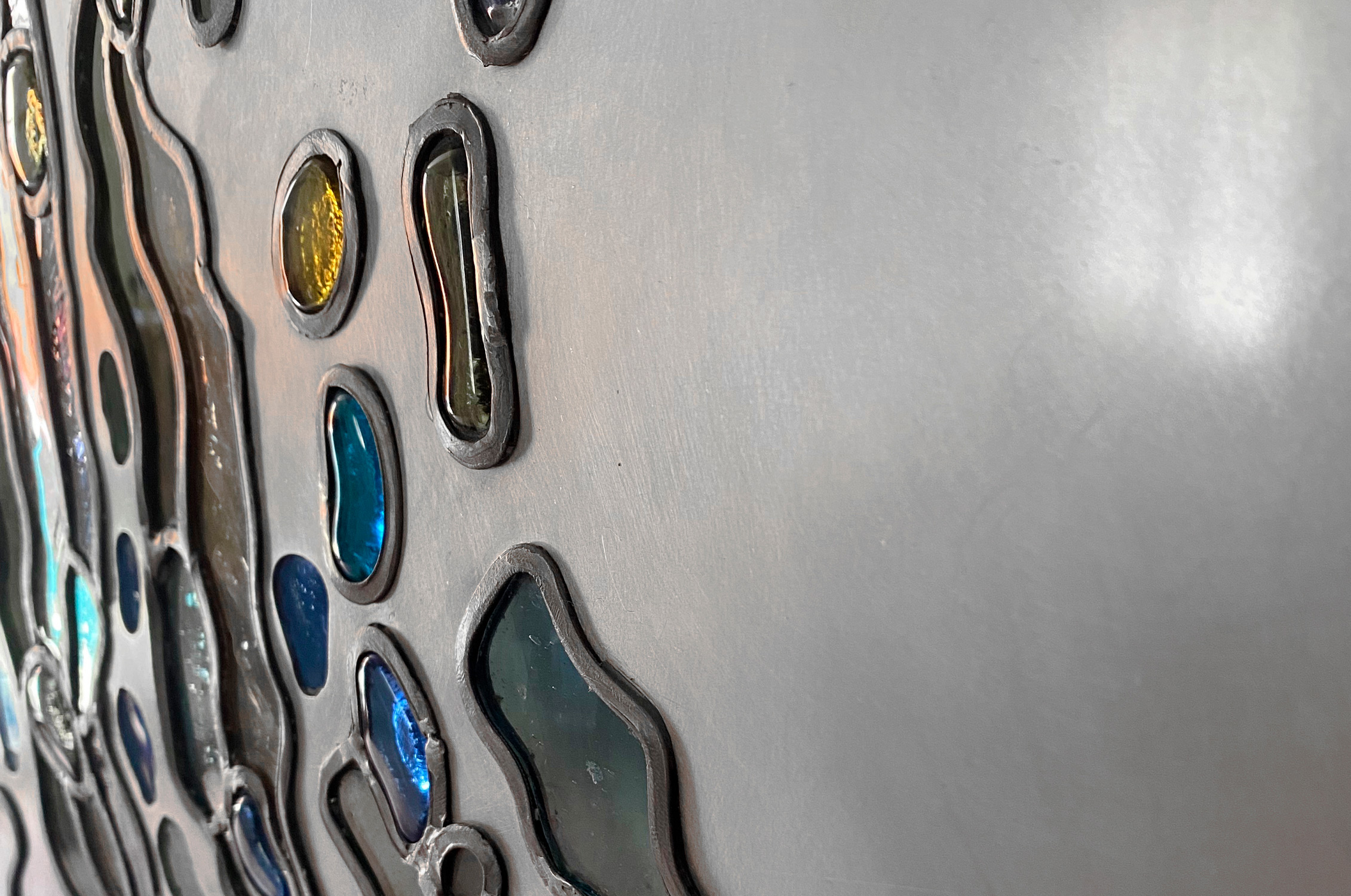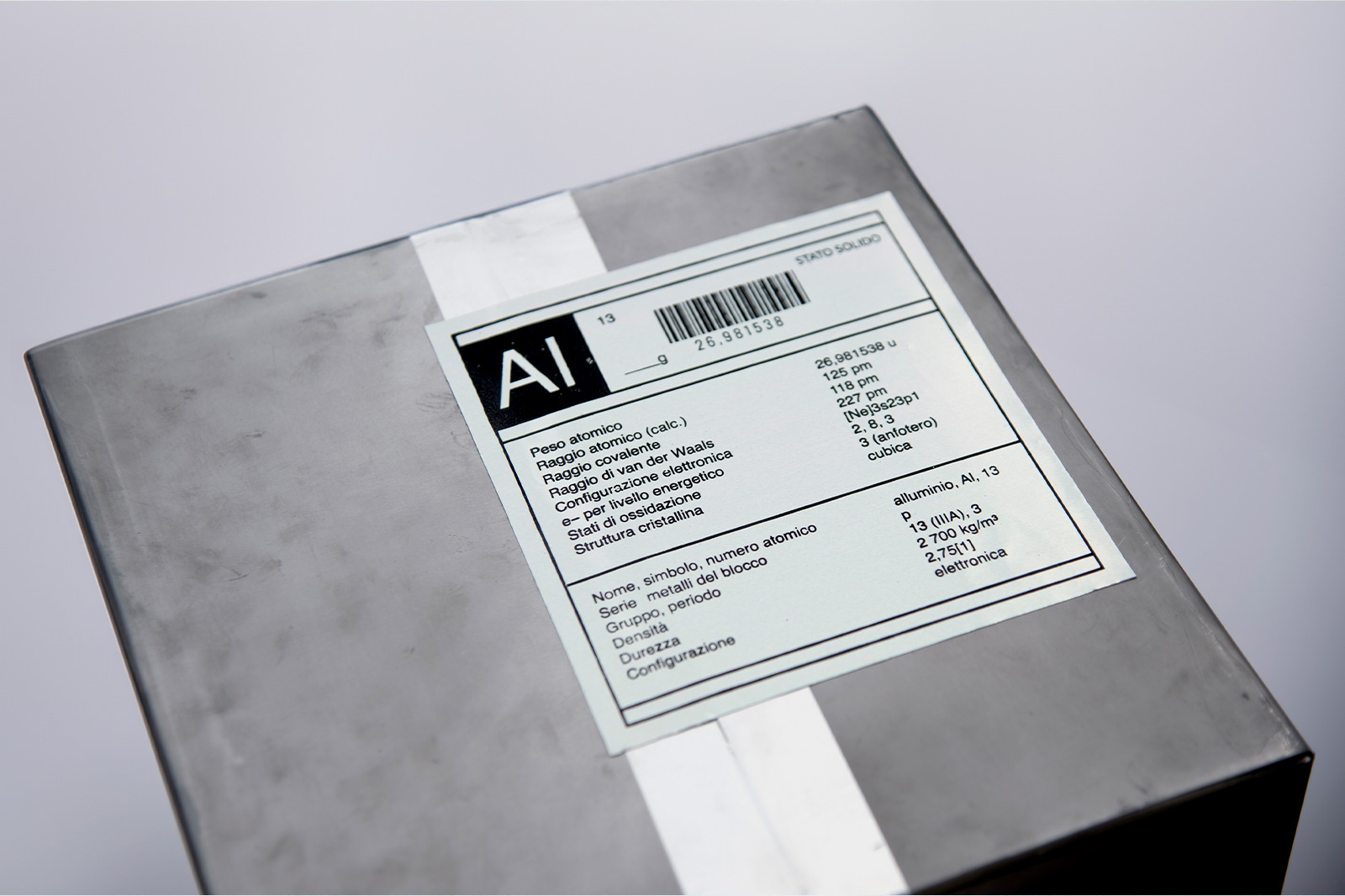COMEL AWARD VANNA MIGLIORIN
Interview with Monica Gorini
by Dafne Crocella
Born in Domodossola, she lives and works between Milan and Lake Orta. Graduated from the Brera Academy of Fine Arts in Milan, she has always combined her artistic activity with pedagogical and educational training, collaborating with universities, institutions, and important academies. Monica Gorini’s artistic research, drawn from her many years of experience with blind individuals, is based on the cross- pollination of different languages with a strong inclination for experimentation. She has exhibited in solo and group exhibitions in Italy, the United States, France, Germany, and Spain.
The installation, Rayons de Lumière, received a special mention among the 13 finalist works of the 10th edition of the Comel Award thanks to the refinement of its research on light, both on a material and conceptual level. How do you think these two aspects, the technical and the conceptual, coexist in your art?
Both aspects are essential in my work and closely related. Above all, technical knowledge is fundamental for an artist because it allows one to understand the feasibility of a project and maximize an idea’s expressive capacity. My innate propensity for research and knowledge has allowed me to learn even complex techniques in various fields.
In your artistic research, light plays a fundamental role. When and why did this interest arise?
Living on Lake Orta, I have always been fascinated by it. In that place, the light conditions change rapidly and, with time, transform the appearance of reality; in a few minutes, everything magically changes, and everything flows, revealing an immense variety of visions.
The spiritual Nature of light has also always seduced me. In recent decades I have studied it from an optical and scientific point of view. Then there is the mystery of its relationship with colour: “There is light, radiation of a certain wavelength range, without causing colour, but there is no colour (except in our dreams and imagination) without light.” Light is radiation capable of exciting the human visual system, while colour is the sensation caused by light. (Robert Hirschler). “Already Newton understood that rays, to speak correctly, are not coloured. By this he meant that a colour is a sensation of the mind resulting from light, just as a sound is a sensation of the mind resulting from the physical vibrations of the air.” (David Briggs).
I was also fascinated by neon; coloured tubes, Less is more, the maxim of minimalism. The simple structures of fluorescent lamps designed by Dan Flavin for Villa Panza many years ago already foreshadowed the power of a new perceptual lexicon: the potential of sculpting empty space. In his experiment Ganzfelds, total field, James Turrel will go beyond neon; he will invade a room with pure light uniformly and intensely diffused with intermittent colour changes, an experiment that will prevent the viewer from perceiving the depth of the space but will create a strong feeling of spirituality. An interest in light has marked my path as an artist; I am working to create ethereal sculptures made of radiant luminosity.
Totem – Variations-perceptives
The installation Rayons de Lumière belongs to a series of works that originated due to your artistic residency in France, Synthèse visuelle. Can you tell us how this project came about and what moved it?
In northern France every element of the landscape strikes, not only in the eyes, but in the body and the senses. There you have to be able to sustain the light. There is no better place than Normandy to study the variation of that subtle and invisible dust between us and things, the enveloppe, which had knocked even the Impressionist painters off their feet. In Giverny, I spent whole days observing the mirrored surface of the water where archipelagos of water lilies share space with the sun’s glare, with the reflections of the skies furrowed by clouds and wind in an ever-changing continuously moving interplay.
Synthèse visuelle is also the title of a book you wrote following your French residency. Why did you feel the need to report your research in a text? What do you feel that experience added to the artistic project?
The book is a diary transcript written almost daily during the residency period. I decided to publish it to make all the stages of a seemingly very conceptual work understandable.
Contemporary art is not difficult; it just needs to be explained. I am interested in establishing a dialogue with the viewer; only then can the viewer grasp the profound message in my works.
Nature is a guide in your work. You observe it, you tell it stories, you establish a dialogue with it that you bring back to the users of your works. What aspects of the natural world fascinate you the most and what (if any) message do you feel you need to glean from Nature?
In my cross-modal approach to Nature, that is, with an interconnection between the senses, very close to synesthesia, my thinking is holistic; there is a recognition of an intelligence of the Universe that unifies the Whole and involves many aspects of knowledge: mathematical, botanical, philosophical, aesthetic, scientific, poetic, spiritual.
In this sense, my concept of Nature has very broad horizons. The more I study it, the more I understand how much I have to learn from its beauty, perfection, laws, and so on. I am completely fascinated by it.
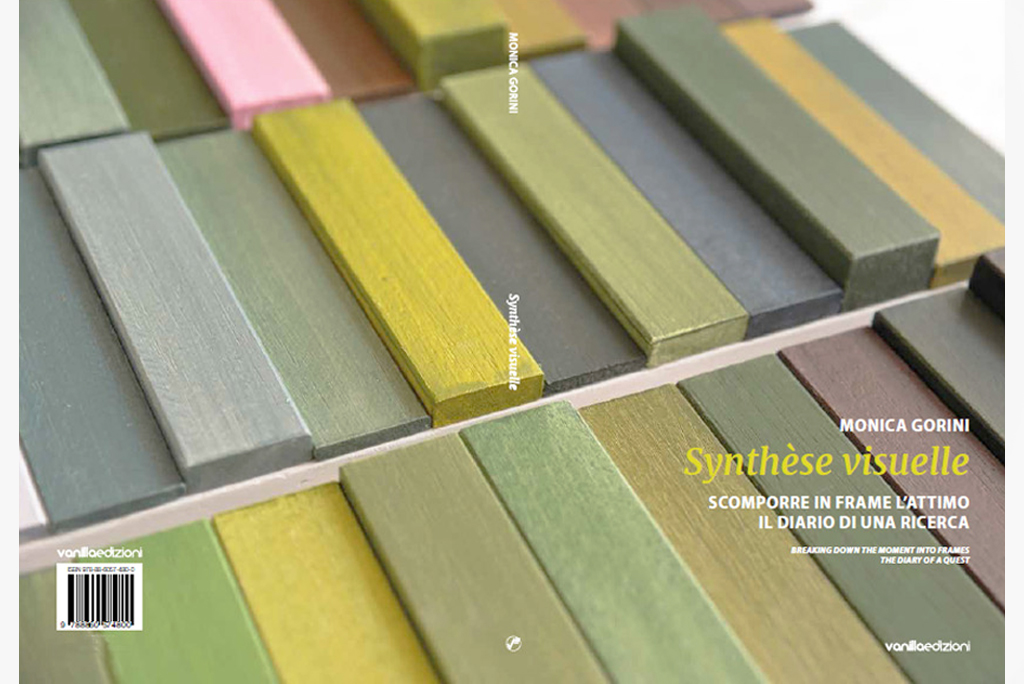
Synthèse visuelle (book cover)
In addition to light, water frequently returns in your works as a mirror, a reflective surface, and an alteration of visual perception. What is the relationship between water and light in your works, both on a symbolic and material level?
Water and sky are my elements. Sometimes they blend, switch places, and are charged with expectation and mystery. With its transparencies and continuous flow, water has always seduced me; it allows me to study light even better. Each body has certain properties of reflection, absorption and transmission of light that must be considered in a larger context especially when factors such as shadows and water with its reflective surface come into play in the observed scene. Studies on variations and perception become dizzying: constructions and deconstructions. The mirror of water as well as colour create replicas but also deconstruct. They are the “mise en abîme” of Nature where there is no end.
The viewer is asked to physically participate in the perceptual game because the mind is not enough; the body is also an indispensable means of knowledge. Through my sculptures, he becomes an active user in the process of transforming his own seeing.
Wooden palettes painted in different colours often return in your work, creating a colour inventory. What is colour for you? And why did you choose the form of the palettes to reproduce it?
I have a perception of colour related to combined sensory stimulations that go beyond the visual: temperature, sounds, shapes, movements, and scents provoke real sensations that allow me to understand a certain shade. It happens as if, at the moment of observation, neural connections, memories, theories, and prior knowledge in different fields are activated and contribute to understanding the colour of the natural subject on which attention is focused. That is, the act of understanding becomes the sum of different areas of knowledge that connect in an interdisciplinary vision. I find the perspective of scholars Rolf G. Kuehni and Andreas Schwarz engaging when they write, “Although the full understanding of colour continues to elude us, it seems clear that it will eventually come from research in neurobiology, perception and consciousness.”
The palettes were chosen because in some moments of high concentration, I perceive the landscape exactly in “palettes,” sort of pixels that make up the view. Nature is like a Matrix for me —alive and able to communicate through codes. I sense its music and intelligence, made visible even in mathematical ratios. To most people, however, it manifests itself more explicitly in chromatic harmony.
Wooden dowels are derived from the golden rectangle, simple alphabets of form and light in dialogue in my installations, which also include mirrors, coloured and backlit plexiglass, steel, and LEDs.
In addition to coloured palettes, metal surfaces, especially aluminium, return to your work. When and why did you start working with this material? What characteristics do you find most helpful in expressing your artistic research?
Mirrored aluminium is a fascinating material; it allows me to best “make visible” my research on visual perception. I started using it right after my residency in France because it was perfect for “talking” about the nature of vision in which I am doing my studies.
Synthèse Visuelle, 2023 – Installation, Gilda Contemporary Art, Milan. Photo: Vincenzo Pagliuca
You use different techniques, such as photography, video art, painting, sculpture, or installation. Each technique showcases different angles of a single pursuit. Is there a medium that you feel is most congenial to your work or to which you are most attached? And how do you choose which technique to approach research with?
I am definitely a visual artist, but after working with blind people for a long time, experimenting by interweaving multiple languages has become a requirement. Each technique showcases different angles of a single research so the result is complete. Also, cross-modality, a characteristic of my perception, now makes working with a specific medium difficult. However, photography is the most friendly and immediate tool for me. I make creative use of it, often imposing settings on the camera that strain its functioning to make visible perceptual acts and intangible phenomena that I want to narrate.
In addition to your relationship with Monet, particularly in your project Synthèse visuelle, are there other artists you consider important as a stimulus to your research?
Definitely, Mark Rothko, whose anthological exhibition at the Fondation Louis Vuitton in Paris, I am going to see soon. I am ready for an emotional and spiritual confrontation with his works and with myself.
Then, the American James Turrel sealed the dematerialization of art through light. But more than the artists studied directly through their works preserved in museums or at galleries around the world, the experiments and discoveries of mathematicians, neuroscience scholars, philosophers, and spiritual masters, are capable of indulging my continuous curiosity about the Universe, understanding who we are and the complexity of our being… pure light energy, are stimuli for my research.

